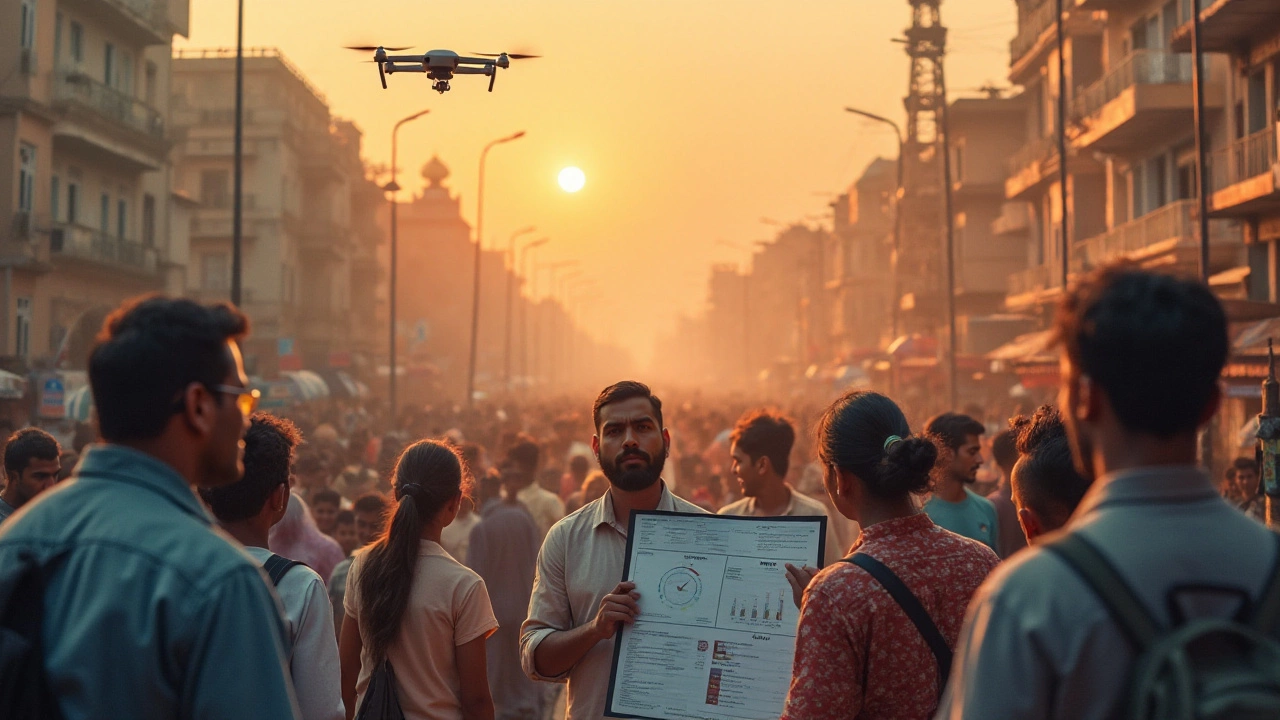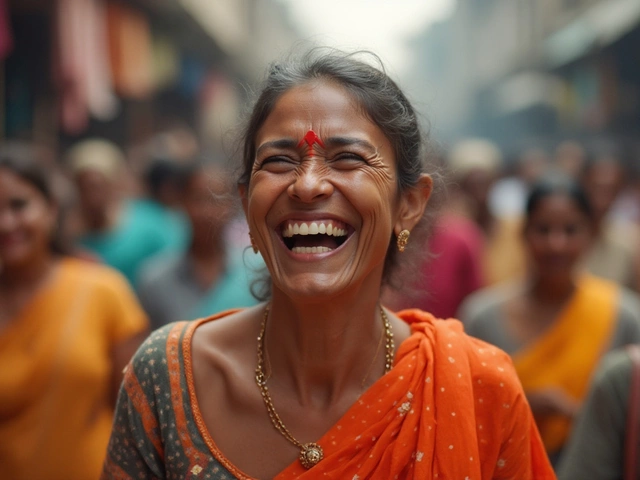The sight of drones soaring through the skies has become both familiar and fascinating worldwide. Their ability to capture stunning aerial shots has revolutionized photography and videography, drawing enthusiasts and professionals alike. However, in India, operating DJI drones isn't as straightforward as it seems due to a complex maze of regulations and restrictions.
At the heart of these restrictions are concerns about national security and privacy. Indian authorities remain cautious about allowing foreign-made drones free rein in their airspace. This careful approach isn't just bureaucratic red tape; it ties into larger conversations about security, technological dependency, and the need for stringent oversight. Understanding these issues provides clarity on why India's stance on DJI drones is as firm as it is, alongside a look into what the future might hold for drone technology in this vibrant country.
Regulatory Challenges
Navigating the regulatory landscape for using drones in India, especially DJI drones, resembles a complex dance of policies and permissions. Since 2018, when the Directorate General of Civil Aviation (DGCA) allowed civilian drone usage with the Digital Sky Platform, the flying experience has been a blend of opportunity and constraint. DJI drones, known for their market-leading technology, often find themselves under rigorous scrutiny. As these drones offer high-definition camera capabilities, the Indian government remains cautious, not merely enforcing stringent rules to challenge enthusiasts but to protect security interests.
The DGCA's regulations categorize drones based on weight and impose strict operational guidelines. Obligations, such as No Permission, No Take-off (NPNT) policy, reinforce controlled use. This compliance involves obtaining a unique identification number and adhering to geo-fencing parameters that the drones must respect. Interestingly, the regulatory framework extends to pilots needing to clear an exam to acquire a certificate, ensuring only those with adequate skills operate drones.
At times, DJI, a foreign entity, encounters additional layers of scrutiny that Indian locally produced drones might bypass. Questions about data storage and transmission safety arise because DJI drones often connect to Chinese servers. This aspect stirs debate, reflecting a significant penchant for regulatory diligence in India. An
Indian aviation expert once mentioned, "The drone sector offers immense possibilities, yet bold actions warrant careful oversight."
These challenges may seem overwhelming to budding drone photographers, but they are pivotal. Operators must navigate through a maze of red tape to enjoy unhindered airspace benefits. This journey, though daunting, instills a meticulous culture among operators, ensuring attention is always given to India's distinct regulatory environment. As times evolve, so might the regulations. Enthusiasts hope for an innovative regulatory overhaul that mirrors technological advances while balancing security concerns, a reflection of a progressive vision for the future of drone technology.
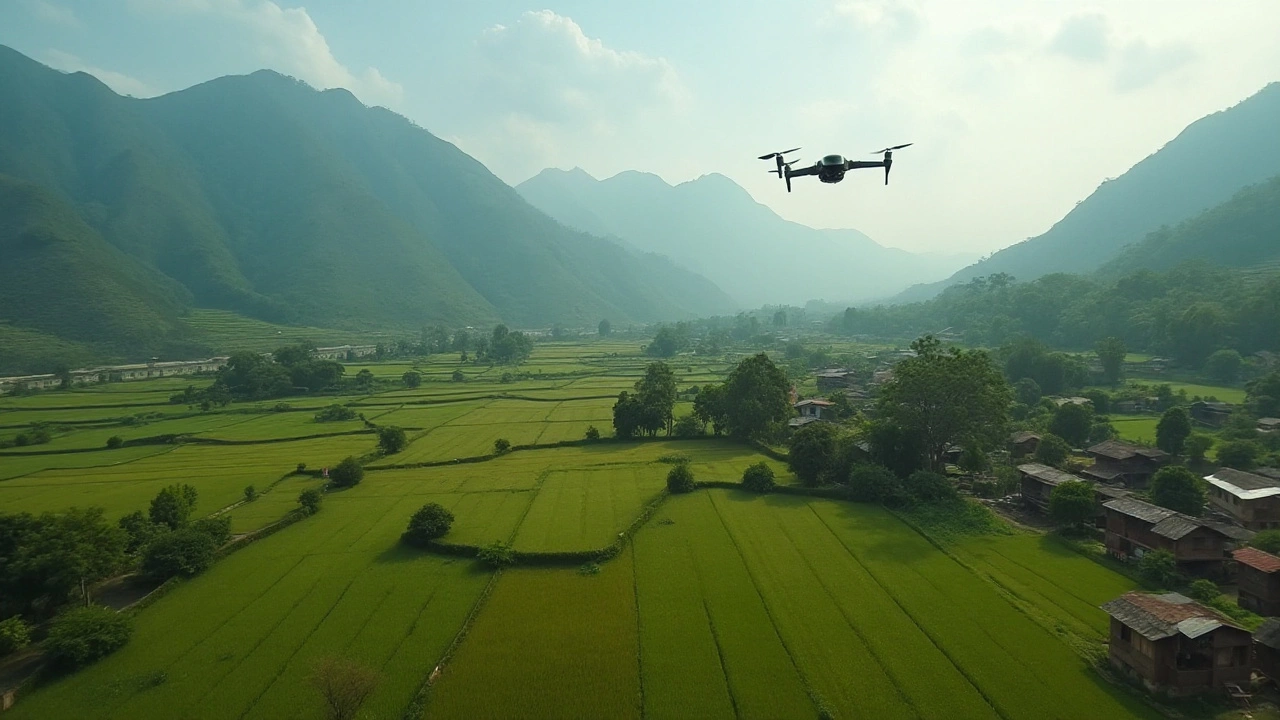
Security Concerns
The crux of the security concerns regarding DJI drones in India revolves around potential espionage risks and unauthorized data collection. As drones can cover vast areas quickly and capture high-resolution imagery, they pose a unique challenge to national security. The Indian government remains wary about data being transferred from these drones to foreign shores, especially since DJI, a Chinese company, has historically been scrutinized for data privacy and security issues. Such apprehensions have led to stringent regulations aimed at safeguarding sensitive locations from prying eyes, perceived or real.
A notable instance highlighting these security concerns occurred in 2018 when the Indian Army raised alarms over unidentified drones sighted near sensitive military installations. This incident underscored the potential threat of drones in compromising military security and intelligence. Swift countermeasures were implemented to curb unauthorized drone use in such regions, and these measures have only intensified since. In 2020, a report emerged questioning the cybersecurity measures of many commercial drone operators, including DJI, prompting further scrutiny in countries like India.
"The ability of drones to blend in and access areas that are otherwise highly restricted adds a layer of complexity to securing national borders and installations," stated a drone policy expert from the Brookings Institution.
Another layer of concern is the software embedded within these drones. With advanced AI capabilities, these devices can perform mapping and surveillance autonomously, posing risks beyond traditional photography. Indian authorities demand strict compliance with technology standards that are transparent and secure, not just for consumer safety but to ensure no covert data breaches occur through drone operations.
The Indian Directorate General of Civil Aviation (DGCA) has been instrumental in framing policies that limit the use of foreign drones, particularly in restricted airspace zones. The rules mandate prior permissions and real-time monitoring capabilities to ensure that every drone flight is logged and tracked. These measures, while cumbersome for operators, form a crucial cylinder of defense against unauthorized aerial interferences. Within this framework, drone registration and digital control mechanisms are pivotal to harmonizing drone activities with national security imperatives.
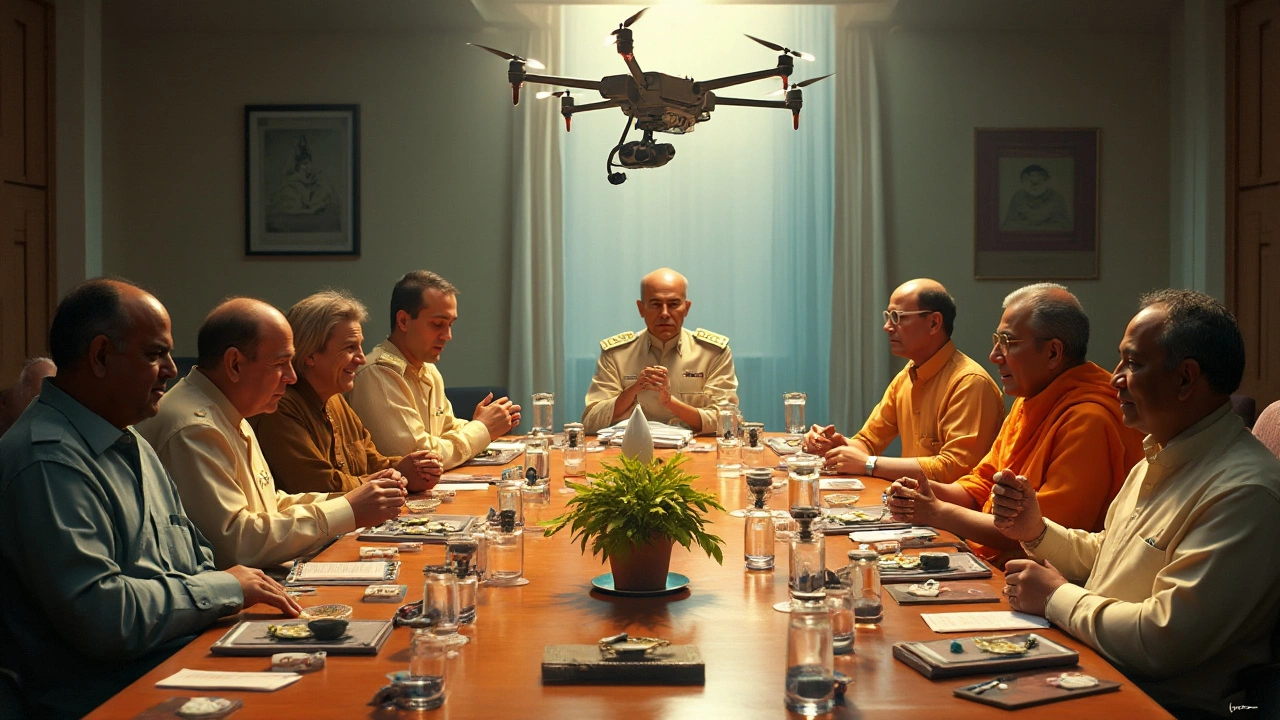
Privacy Issues
When it comes to DJI drones in India, privacy concerns have proven to be a significant hurdle. These drones, equipped with high-definition cameras and advanced flight capabilities, can capture extensive footage from altitudes that seem unobtrusive to the casual observer. Such capabilities, while revolutionary for aerial photographers, have raised alarms among privacy advocates and government officials. The crux of the issue lies in the ability of these drones to potentially invade personal and private spaces, recording details that individuals might prefer to keep undisclosed. As they hover above residential areas or public gatherings, the line between creativity and intrusion becomes blurry and contentious. The Indian populace is particularly sensitive to privacy, and there's an ongoing debate about how these technological advancements might erode personal boundaries. Concerns are not just about unauthorized recordings but also about how these images and data could be misused or fall into the wrong hands, potentially leading to harmful scenarios.
One noteworthy instance reflecting these concerns was when several complaints arose about drones surveillancing areas without consent, resulting in an increased push for stringent regulations. Laws governing the unauthorized capture of images remain a complex challenge to address. In the words of a renowned data protection expert, "Regulating the usage of drones in populous countries like India requires a delicate balance between innovation and privacy rights." A survey conducted in 2023 found that nearly 65% of citizens were worried about their privacy due to drones, showing a significant public apprehension towards these flying devices. This discomfort isn't unfounded, as drones equipped with facial recognition software can track individuals silently and undetectably. The potential for misuse is vast, ranging from stalking to corporate espionage, something not lost on India’s regulatory bodies.
Addressing these issues, the Indian government has tasked regulatory agencies with outlining clear protocols for the safe and ethical use of drones. Among these, obtaining consent for filming in certain locales is paramount. Enthusiasts and professionals are encouraged to keep abreast of these rules to ensure compliance. Despite the challenges, a middle ground is being sought to allow for the growth of drone photography while protecting privacy. These efforts are not just governmental but also involve community participation to raise awareness on responsible drone usage. Newer technology packages are emerging with built-in privacy measures, allowing users to adjust settings that blur or black out sensitive areas. This iterative process provides hope that privacy concerns can be managed effectively without stifling the burgeoning industry of aerial photography.
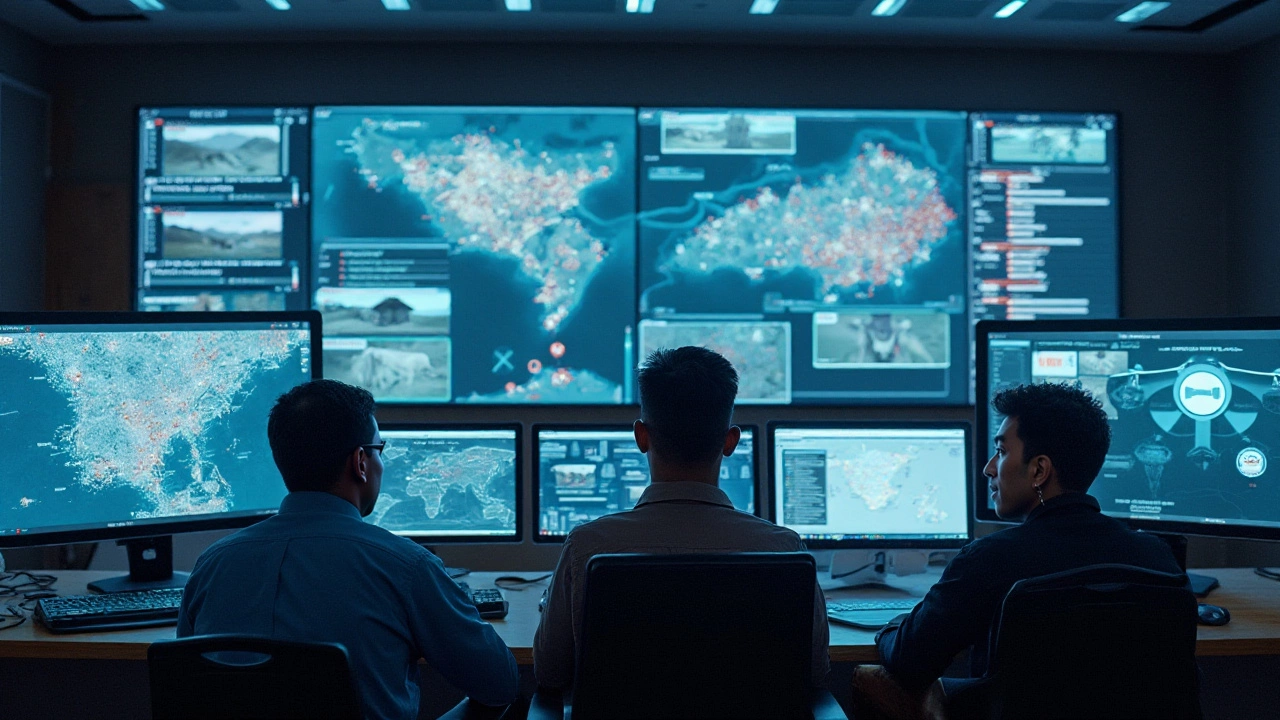
Future Prospects
As the technology landscape evolves at breakneck speed, the future prospects of DJI drones in India remain both exciting and uncertain. Innovations in drone technology continue to push the envelope, with advancements in AI, battery life, and camera capabilities reshaping what these flying machines can achieve. For enthusiasts and professionals in India, the hope is that these technological strides will eventually lead to a reevaluation of current regulations. A shift in the perception of drones from a potential threat to a complementary tool in various sectors could redefine their role in the Indian airspace.
The current restrictions could see a gradual loosening if manufacturers and governing bodies collaborate to address primary concerns like security and privacy. Initiatives such as developing indigenous technology could play a pivotal role here, as locally built drones might reassure authorities wary of data leakage and foreign surveillance. Moreover, integrating technologies like blockchain could ensure better data handling practices, further alleviating privacy concerns.
There is optimism that the booming Indian tech ecosystem can contribute significantly. With startups exploring innovative solutions in drone technology, the potential for growth is immense. This sentiment echoes in the words of industry experts:
“India is on the cusp of a drone revolution. By aligning our regulatory frameworks with global standards while nurturing local talent, we can unlock new avenues in sectors like agriculture, logistics, and disaster management.”This highlights the promising path local innovation could pave for DJI drones and other international players in India's diverse market.
Drone regulations could evolve significantly if there's an economic imperative to integrate drones into various industries. For instance, schemes like Digital India could leverage drones for better infrastructure mapping and monitoring. Agriculture, a backbone of the Indian economy, could greatly benefit from drone-based surveying and pest control, leading to enhanced productivity. With investments and research focused on these applications, the future could see a harmonious blend of foreign technology like DJI and homegrown innovations that meet both security and functional needs.
To prepare for these potential changes, individuals and businesses involved in aerial photography should stay informed about regulatory developments. Investing in drone education and training can ensure readiness when opportunities arise. Building a dialogue with authorities by participating in workshops or forums dedicated to drone policies could also help bridge the existing gaps. As drones edge closer to becoming an indispensable part of modern life, India will have to balance vigilance with innovation to unlock the full potential of drone technology.
